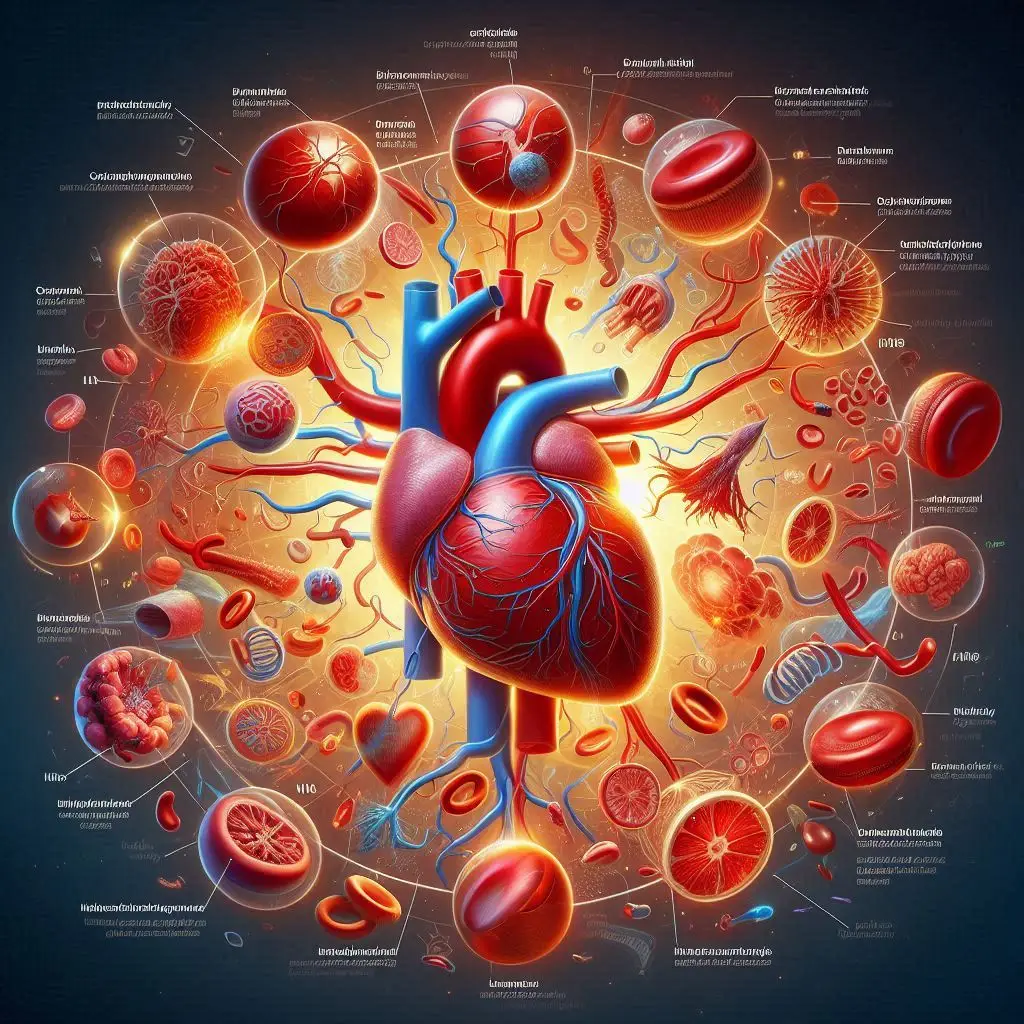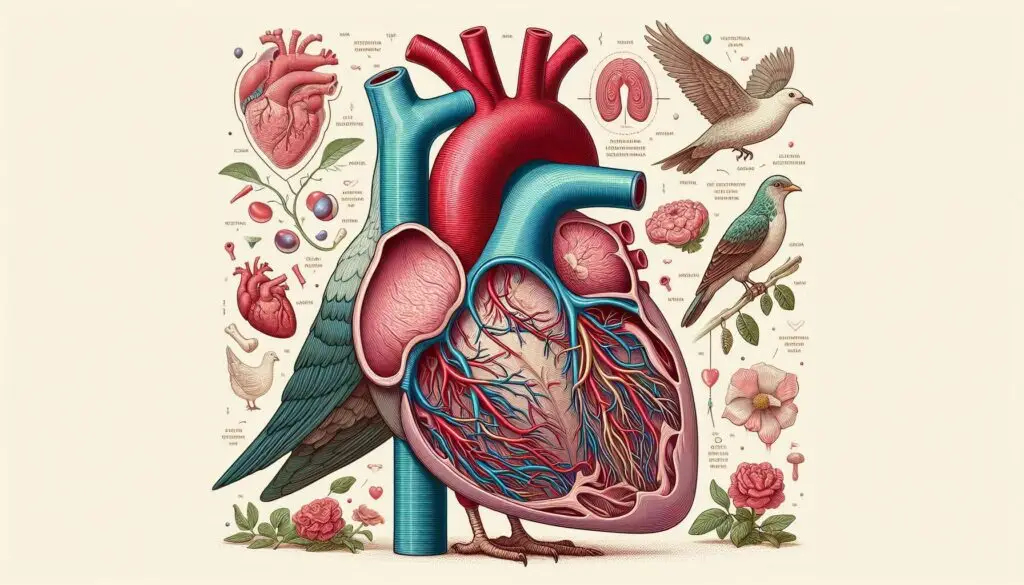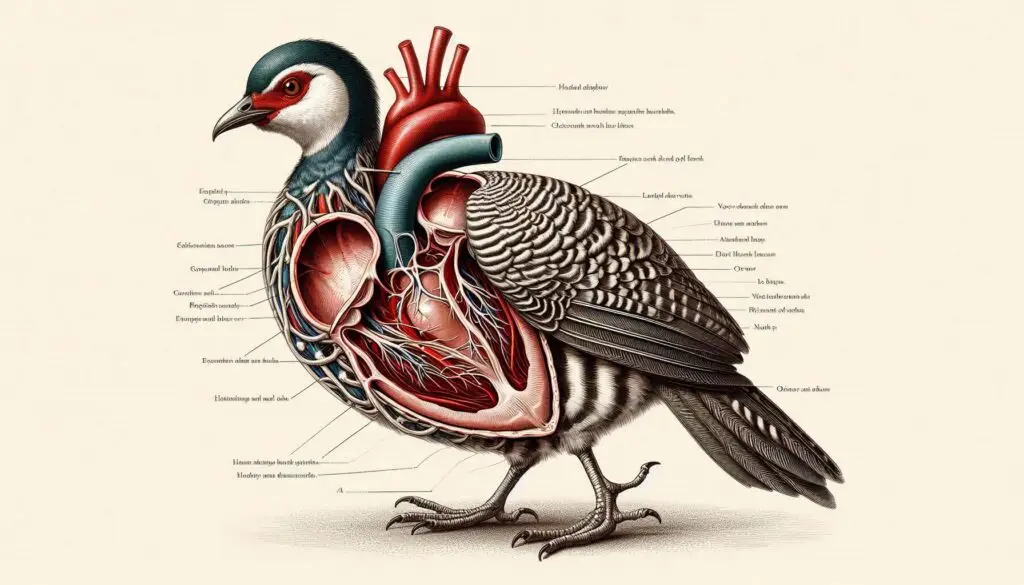Circulatory Systems: From Human Anatomy to Avian Adaptations

Introduction
The circulatory system is a vital network responsible for transporting blood, nutrients, gases, and waste products throughout the body. In humans, it comprises several components, including coronary and pulmonary circulation, the blood-brain barrier, cerebrospinal fluid, and more. Birds also possess a unique circulatory system adapted for flight. This article delves into these fascinating aspects of circulation, highlighting their structure, function, and significance.
1. Coronary Circulation
1.1 Overview
Coronary circulation is the flow of blood to and from the tissues of the heart. It is essential for supplying oxygen and nutrients to the heart muscle, enabling it to function effectively. The coronary arteries branch off from the aorta and encircle the heart, ensuring that every part of the myocardium receives adequate blood supply.
1.2 Anatomy of Coronary Circulation
- Coronary Arteries: The left coronary artery (LCA) and right coronary artery (RCA) arise from the aorta. The LCA further divides into the left anterior descending (LAD) and circumflex arteries, while the RCA supplies the right side of the heart.
- Coronary Veins: Deoxygenated blood is returned to the right atrium through the coronary veins, which include the great cardiac vein, middle cardiac vein, and small cardiac vein. These veins drain into the coronary sinus, a large venous channel located on the posterior aspect of the heart.
1.3 Function and Importance
The primary function of coronary circulation is to deliver oxygen-rich blood to the heart muscle. This is crucial because the heart requires a constant supply of oxygen to maintain its pumping action. Any blockage in the coronary arteries can lead to ischemia, resulting in chest pain (angina) or a heart attack (myocardial infarction).
1.4 Common Conditions
- Coronary Artery Disease (CAD): A condition characterized by the narrowing of coronary arteries due to plaque buildup, leading to reduced blood flow to the heart.
- Myocardial Infarction: Occurs when a coronary artery becomes completely blocked, resulting in damage to the heart muscle.
1.5 Prevention and Management
Maintaining a healthy lifestyle is crucial for preventing coronary artery disease. This includes:
- Regular Exercise: Engaging in physical activity strengthens the heart and improves circulation.
- Balanced Diet: Consuming a diet rich in fruits, vegetables, whole grains, and lean proteins can help lower cholesterol levels and maintain a healthy weight.
- Regular Check-ups: Monitoring blood pressure, cholesterol levels, and other risk factors can help detect potential issues early.
2. Pulmonary Circulation
2.1 Overview
Pulmonary circulation is the process by which deoxygenated blood is transported from the heart to the lungs and back to the heart. This circuit is essential for gas exchange, allowing carbon dioxide to be released and oxygen to be absorbed.
2.2 Anatomy of Pulmonary Circulation
- Pulmonary Arteries: The right ventricle pumps deoxygenated blood into the pulmonary trunk, which bifurcates into the left and right pulmonary arteries, leading to the respective lungs.
- Pulmonary Veins: After oxygenation in the lungs, blood returns to the heart via the pulmonary veins, which empty into the left atrium.
2.3 Function and Importance
The primary function of pulmonary circulation is to facilitate gas exchange in the lungs. Here, carbon dioxide is expelled, and oxygen is absorbed into the bloodstream. This oxygen-rich blood is then delivered to the body through systemic circulation.
2.4 Unique Features
- Low Pressure System: Pulmonary circulation operates at a lower pressure compared to systemic circulation, which is necessary to prevent damage to the delicate lung tissue.
- High Compliance: The pulmonary arteries are more compliant than systemic arteries, allowing them to accommodate changes in blood volume without significant increases in pressure.
2.5 Common Conditions
- Pulmonary Hypertension: A condition characterized by elevated blood pressure in the pulmonary arteries, leading to increased workload on the right side of the heart.
- Pulmonary Embolism: Occurs when a blood clot travels to the lungs, blocking a pulmonary artery and disrupting blood flow.
2.6 Prevention and Management
Preventive measures for pulmonary conditions include:
- Avoiding Smoking: Smoking is a major risk factor for lung diseases and pulmonary hypertension.
- Regular Exercise: Physical activity helps improve lung function and overall cardiovascular health.
- Monitoring Health: Regular check-ups can help detect early signs of pulmonary issues.
3. Blood-Brain Barrier
3.1 Overview
The blood-brain barrier (BBB) is a selective permeability barrier that protects the brain from harmful substances while allowing essential nutrients to pass through. It is formed by tightly packed endothelial cells lining the brain’s capillaries.
3.2 Structure of the Blood-Brain Barrier
- Endothelial Cells: The cells of the BBB are connected by tight junctions, preventing the free passage of substances from the bloodstream into the brain.
- Astrocytes: These star-shaped glial cells support the BBB by releasing signaling molecules that promote the formation and maintenance of tight junctions.
3.3 Function and Importance
The BBB serves several critical functions:
- Protection: It prevents toxins, pathogens, and large molecules from entering the brain, safeguarding neural tissue.
- Homeostasis: The BBB helps maintain a stable environment for the brain by regulating the passage of ions and nutrients.
- Selective Transport: Essential nutrients such as glucose and amino acids can cross the BBB through specific transport mechanisms.
3.4 Common Conditions
- BBB Disruption: Conditions such as multiple sclerosis, Alzheimer’s disease, and stroke can compromise the integrity of the BBB, allowing harmful substances to enter the brain.
- Neuroinflammation: Inflammatory processes can affect BBB permeability, contributing to various neurological disorders.
3.5 Research and Therapeutic Implications
Understanding the BBB is crucial for developing treatments for neurological diseases. Researchers are exploring ways to enhance drug delivery across the BBB while maintaining its protective functions.
4. Cerebrospinal Fluid Circulation
4.1 Overview
Cerebrospinal fluid (CSF) is a clear fluid that surrounds the brain and spinal cord, providing cushioning and support. It plays a vital role in maintaining homeostasis within the central nervous system.
4.2 Production and Circulation
- Production: CSF is primarily produced by the choroid plexus, a network of blood vessels located in the brain’s ventricles.
- Circulation: CSF flows from the lateral ventricles to the third ventricle, then to the fourth ventricle, and finally into the subarachnoid space surrounding the brain and spinal cord.
4.3 Functions of Cerebrospinal Fluid
- Protection: CSF acts as a cushion, absorbing shocks and preventing injury to the brain and spinal cord.
- Nutrient Transport: It helps transport nutrients, hormones, and waste products between the brain and bloodstream.
- Buoyancy: CSF reduces the effective weight of the brain, preventing pressure on the base of the skull.
4.4 Common Conditions
- Hydrocephalus: A condition characterized by an accumulation of CSF in the ventricles, leading to increased intracranial pressure.
- Meningitis: Inflammation of the protective membranes surrounding the brain and spinal cord, often affecting CSF circulation.
4.5 Diagnosis and Treatment
CSF analysis is a valuable diagnostic tool for various neurological conditions. Lumbar punctures can be performed to collect CSF for laboratory analysis, helping identify infections, bleeding, or other abnormalities.
5. Circulation in Birds
5.1 Overview
Birds possess a unique circulatory system that supports their high metabolic demands, particularly during flight. Like mammals, birds have a closed double circulatory system with a four-chambered heart.
5.2 Anatomy of Avian Circulation
- Heart Structure: The avian heart consists of two atria and two ventricles, similar to mammals. However, the avian heart is more elongated and less rounded.
- Aortic Arch: Birds retain the right aortic arch, while mammals typically have a left aortic arch. This adaptation is important for their unique circulatory needs.
5.3 Function and Importance
Birds require a highly efficient circulatory system to meet the oxygen demands of flight. The four-chambered heart allows for complete separation of oxygenated and deoxygenated blood, maximizing oxygen delivery to tissues.
5.4 Unique Features
- Renal Portal System: Blood from the lower body passes through the kidneys before returning to the heart, allowing for efficient filtration and regulation of body fluids.
- High Heart Rate: Birds generally have a higher resting heart rate compared to mammals, which supports their active lifestyle.
5.5 Adaptations for Flight
Birds have several adaptations that enhance their circulatory efficiency:
- Large Lung Capacity: Birds possess air sacs that allow for continuous airflow through the lungs, optimizing oxygen exchange.
- Efficient Oxygen Utilization: The unique structure of avian lungs enables birds to extract more oxygen from the air compared to mammals.
Conclusion
Understanding the intricacies of circulatory systems, from human anatomy to avian adaptations, provides valuable insights into how various organisms maintain health and function. The coronary and pulmonary circulations in humans, along with the blood-brain barrier and cerebrospinal fluid, play critical roles in sustaining life. Meanwhile, birds exhibit remarkable adaptations in their circulatory systems that enable them to thrive in their environments. By appreciating these complex systems, we can better understand the importance of cardiovascular health and the impact of various conditions on overall well-being.
For more pearls of Vets Wisdom:






Responses